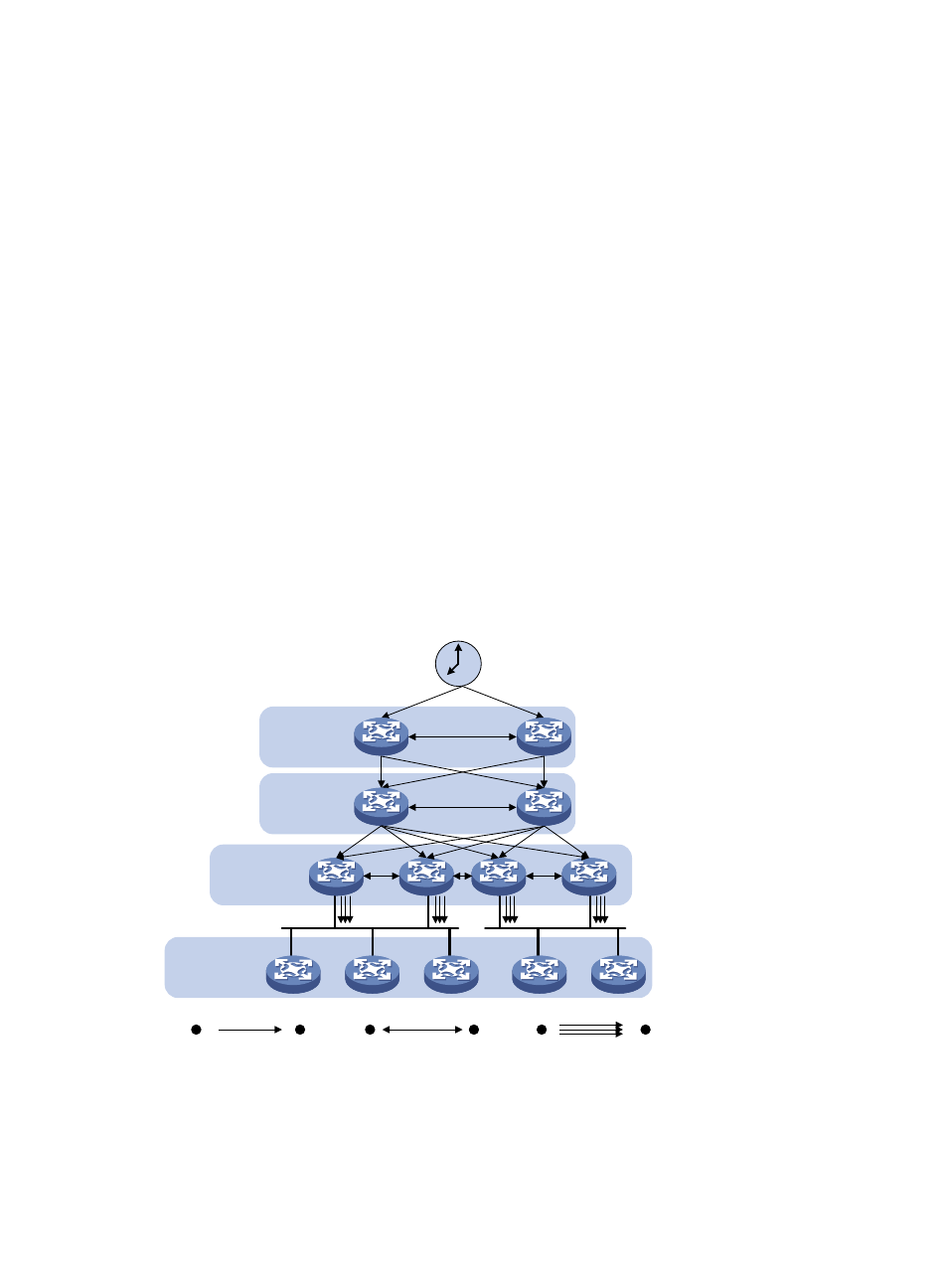Ntp architecture – H3C Technologies H3C MSR 5600 User Manual
Page 73

60
The synchronization process is as follows:
1.
Device A sends Device B an NTP message, which is timestamped when it leaves Device A. The
time stamp is 10:00:00 am (T1).
2.
When this NTP message arrives at Device B, Device B adds a timestamp showing the time when
the message arrived at Device B. The timestamp is 11:00:01 am (T2).
3.
When the NTP message leaves Device B, Device B adds a timestamp showing the time when the
message left Device B. The timestamp is 11:00:02 am (T3).
4.
When Device A receives the NTP message, the local time of Device A is 10:00:03 am (T4).
Up to now, Device A can calculate the following parameters based on the timestamps:
•
The roundtrip delay of the NTP message: Delay = (T4–T1) – (T3-T2) = 2 seconds.
•
Time difference between Device A and Device B: Offset = ((T2-T1) + (T3-T4)) /2 = 1 hour.
Based on these parameters, Device A can synchronize to Device B.
This is only a rough description of the work mechanism of NTP. For more information, see the related
protocols and standards.
NTP architecture
NTP uses stratums 0 to 15 to define clock accuracy, as shown in
. A lower stratum value
represents higher accuracy. Clocks at stratums 0 through 14 are in synchronized state, and clocks at
stratum 15 are not synchronized.
Figure 26 NTP architecture
Typically, a stratum 1 NTP server gets its time from an authoritative time source, such as an atomic clock,
and provides time for other devices as the primary NTP server. The accuracy of each server is the stratum,
with the topmost level (primary servers) assigned as one and each level downwards (secondary servers)
in the hierarchy assigned as one greater than the preceding level. NTP uses a stratum to describe how
Secondary servers
(Stratum 2)
Primary servers
(Stratum 1)
Authoritative
clock
Tertiary servers
(Stratum 3)
Quaternary servers
(Stratum 4)
Server
Client
Symmetric
peer
Symmetric
peer
Broadcast/multicast
server
Broadcast/multicast
client
